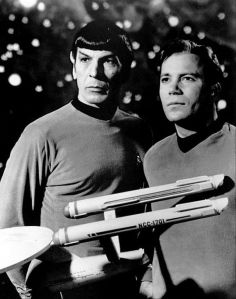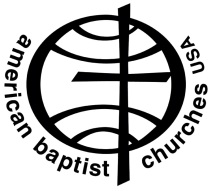 So the first thing I learned while watching the live webcast of a church wide meeting of the Task Force on Reimagining the Episcopal Church was that I’ve been mentally mispronouncing this church wide experiment for the past two years. In my mind, I’ve called it by its four letters, T-R-E-C. The participants, however, called it TREC, as in Star Trek, boldly going where no one has gone before.
So the first thing I learned while watching the live webcast of a church wide meeting of the Task Force on Reimagining the Episcopal Church was that I’ve been mentally mispronouncing this church wide experiment for the past two years. In my mind, I’ve called it by its four letters, T-R-E-C. The participants, however, called it TREC, as in Star Trek, boldly going where no one has gone before.
To continue the comparison, the production value of the webcast was somewhat comparable to The Original Series (fixed sets, lengthy monologues, actors staring into cameras, poor sound quality, etc.). Like TOS, the plot line was rather formulaic – three speakers, each followed by conversation with a two TREC member panel, followed by another speaker, followed by a larger panel discussion, and a closing prayer. It was not exciting television. However, like TOS, if you managed to stay awake for the whole show, the content was pretty good.
The evening began with Bishop Michael Curry reminding us that God’s church has always been a movement that inspired movement, from Abraham to Moses to Jesus to Harriet Tubman to the March on Washington. But just when we might get so excited about being part of a movement that we wonder why bother re-organizing anything, he wisely reminded, “Movements evaporate if they are not organized.” In other words, we do need to look at our structures so that we may more effectively participate in God’s movement in this world. (Unfortunately, he also said, “I was going to sleep when this organization stuff was coming out,” which scares me a bit since many consider him a front runner for Presiding Bishop). Nevertheless, he was inspiring, and he set a tone that many who spoke reiterated – new structures are not a panacea. Rev. Jennifer Adams who spoke on the panel with Bishop Curry following his address put it well. “Very little stands in our way except us. Our current structure is not the main thing that is getting in the way of the work to which God is calling us. We need a culture change.” Bishop Curry added, “TREC is about helping the bones get arranged to hear the word of the Lord. This is about revival!”
Sign me up!
We were then blessed with an excellent history lesson by the Rev. Dr. Dwight Zscheile (Luther Seminary) who reminded us that the Episcopal Church has changed structures several times in our history – from a state church in England to a structure for an American democracy to a missionary society in 1835 to a corporate structure in the early 1900’s. The challenge facing us is that many of our denominational structures were formed to help denominational franchises (ie, congregations) do mission somewhere else. The goal now is to nurture faith communities to engage God’s mission everywhere, starting at home. To this end, TREC envisions denominational structures that will fulfill 4 primary functions:
* Catalyst for ministry of all the baptized (inspire, like Bishop Curry’s sermon)
* Connector for peer learning (like working with Anglican Communion, ecumenical partners, learning networks, etc.)
* Convener for discerning policy and public witness (like proposed missionary convocation with General Convention)
* Capability builder (especially where it is better to work together rather than separately, like with church planting)
Like Adams before him, Zscheile said, “It is tempting to look to restructuring as a solution. Our primary challenges are theological, spiritual and cultural. . . . We will thrive only if we live more deeply into the spirit of Jesus.” Later during the Q & A, Margaret Shannon said, “Structure is not the solution to everything. We are trying to make the structure nimble.”
But lest we wonder again why TREC exists, after some Q & A, Katy George took the podium to say that while structural reform is neither necessary nor sufficient, it would certainly be helpful. Using the metaphor of a boat, a structurally sound boat will not automatically help a poor crew get where they want to go, but a leaking boat will thwart the efforts of even the best crew. We want to be sure our boat is not leaking.
She identified the following TREC improvement priorities:
* Clarity of roles for denominational staff
* More effective decision making processes (particularly between General Conventions)
* Deeper expertise at the church wide level (which sounded like a contradiction to the September TREC letter proposing more contract staff. I’ve been concerned about staffing proposals in the September letter. This conversation was more encouraging.)
* Increased relevance to local needs, which she identified as a concerted strategy to stop duplicating efforts at the denominational and diocesan levels (not sure what she meant by that)
* Accountability within the system, clear goals and objectives
In articulating these hopes for change, she also identified things TREC hoped NOT to change: the church’s prophetic voice, our deliberative approach to decision making, shared power and governance, broad representation, minority voices, and local and diocesan innovation and decision-making.
After questions, Rev’d Miguelina Howell spoke to encourage the church to be ready to accept change. She began with an illustration about putting a Starbucks in the middle of Washington National Cathedral. Would we be willing to do this if God called us to do it? God’s not calling us to do that (though I wouldn’t mind convenient access to chai lattes), but her point was this:”What are you willing to let go to allow God to be at the center of our conversation?”
Other TREC members then took the stage for a larger and longer panel discussion. Here are some themes:
Question: How about letting bishops be apostles and admin be admin? To which Bishop Sean Rowe responded that the role of the bishop is both to give voice to the vision of God and to do administration. “I would like to free up some leaders to stop leading and start administrating and getting more done.” Interesting.
Question/comment: We deal with too many public policy resolutions at General Convention, and our collective voice gets lost. We have great assets as a church to speak much more powerfully on a few things. Bishop Rowe explained that this issue is being explored. The challenge we face is that GC resolutions do help drive our public policy witness. There may be a better way to set our social justice agenda, but we don’t want to limit that agenda too narrowly.
Question: How much young adult representation in the TREC process? Panel members reported 4 members under 40 and 3 over 60, which they felt was a wide age range.
Question: TREC seems to suggest phasing out some Standing Committees and Commissions. How were these selected? Thomas Little explained that the group looked at which commissions tended to have work referred to them by General Convention and which ones tended to generate their own work. It seemed a better use of resources to allow GC flexibility to appoint groups to work on specific questions as needed
The evening closed with prayer and comments from Sewanee seminarian Sarah Miller who said, “The most important thing I have learned is how abundantly God has blessed us for work in the world.” Amen to that.
To return to the Star Trek theme, I loved The Original Series, but I have to admit the concept did get better and better as it went along. (I even liked Enterprise, but I may be in the minority there). However, in spite of its many flaws, that first poorly produced but innovative series, with William Shatner and Leonard Nimoy and Nichelle Nichols and all the rest, launched a television movement that still resonates today.
Innovation is like that. It takes several tries to get it right. I don’t expect us to solve the whole puzzle in Salt Lake City, and I think we’ll get better results if we hold this process loosely, experiment with a few changes, and see what happens. The September letter of TREC implied a call to drastic and sudden changes, but conversation tonight seemed more open to moving deliberately and learning along the way.
Like the original Star Trek, I pray that the work of this TREC will inspire a generation and launch spin offs for years to come. God bless these faithful people who were willing to start the conversation.






















